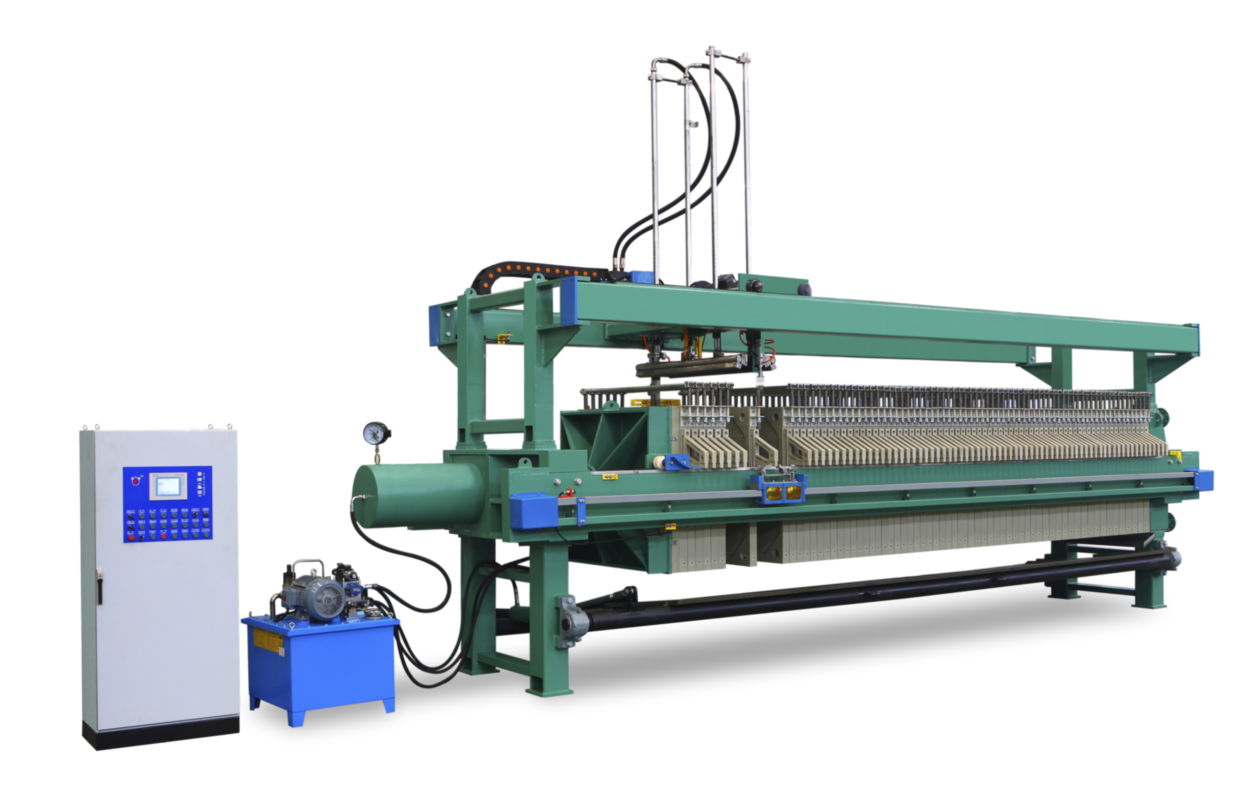Hydraulic filter presses are used for separating solids from liquids in a variety of industrial applications.
Here are the different types of hydraulic filter presses:
Manual hydraulic filter press: A manual hydraulic filter press is a simple and cost-effective option for small-scale applications. It requires manual operation to open and close the plates and apply pressure to the filter cake.
Semi-automatic hydraulic filter press: A semi-automatic hydraulic filter press is operated with the help of a hydraulic pump, which applies pressure to the filter cake. The plates are opened and closed manually.
Automatic hydraulic filter press: An automatic hydraulic filter press is fully automated and requires minimal operator intervention. It is equipped with programmable logic controllers (PLCs) and automatic plate shifters to open and close the plates automatically.
Overhead beam hydraulic filter press: An overhead beam hydraulic filter press is designed for heavy-duty applications and can handle high volumes of slurry. It is equipped with an overhead beam that supports the plates, which allows for larger plates and higher capacities.
Sidebar hydraulic filter press: A sidebar hydraulic filter press is a more compact option that is suitable for smaller-scale applications. It is designed with sidebars that support the plates, which allows for smaller plates and lower capacities.
Membrane hydraulic filter press: A membrane hydraulic filter press is equipped with membranes that can be inflated to squeeze the filter cake, which can increase the efficiency of the filtration process. It is suitable for applications that require high levels of dewatering.
In summary, there are different types of hydraulic filter presses that can be used for various industrial applications. The choice of the type of hydraulic filter press depends on the specific requirements of the application, such as capacity, automation, and efficiency.
5 Tips to Help You Troubleshoot Your hydraulic filter press
Hydraulic filter presses are complex machines that require regular maintenance and troubleshooting to ensure they are functioning properly.
Here are some tips to help you troubleshoot your hydraulic filter press:
Check the hydraulic system: The hydraulic system is a critical component of the filter press, and any issues with the system can cause problems with the operation of the machine. Check the hydraulic fluid level, hydraulic filter press pressure, and temperature, and look for any leaks or damage to the hydraulic lines.
Inspect the filter cloths: The filter cloths are an essential part of the filtration process, and any damage or wear can cause poor filtration performance. Inspect the filter cloths for tears, holes, or clogs, and replace them if necessary.
Check the filter plates: The filter plates can become warped, cracked, or damaged over time, which can affect the sealing and filtration performance. Inspect the filter plates for any damage or wear, and replace them if necessary.
Examine the pump and motor: The pump and motor are critical components of the hydraulic system and can cause problems if they are not functioning correctly. Check the pump and motor for any damage, wear, or leaks, and replace them if necessary.
Review the operating parameters: The operating parameters of the hydraulic filter press can affect the filtration performance. Check the pressure, flow rate, and cycle time, and adjust the parameters as necessary to optimize the performance of the machine.
In summary, troubleshooting a hydraulic filter press requires a comprehensive approach that includes checking the hydraulic system, inspecting the filter cloths and plates, examining the pump and motor, and reviewing the operating parameters. By following these tips, you can identify and address any issues with your hydraulic filter press and ensure it is functioning properly.
